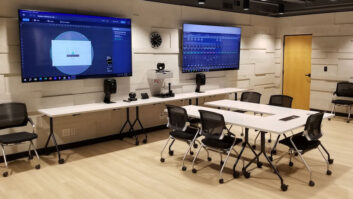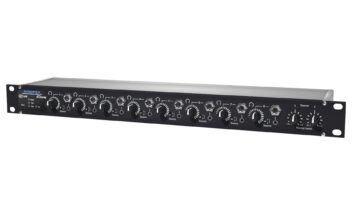Or, what to do when the talent says, “OMG, this sounds so weird!”
As an engineer or producer, you’re surely used to seeing weird looks on the faces of the talent—maybe it’s just looking through the glass?—but sometimes, frankly, it’s almost too much to bear. You’ve been there: You set up a nice cue mix, but the moment Ms. Diva dons the cans and you “roll-in-the-red,” her nose turns up, she looks like she suddenly whiffed raw sewage, dramatically takes one or both ear cups off and says, “OMG, this sounds so weird!” At that moment, you’ve got about 10 seconds to rectify, tops, or you might just get that “tap on the shoulder” and your walking papers.
Here’s some emergency help.
Before applying any band-aids, let’s try and prevent any wounds. ALWAYS personally check the headphone mix before the client arrives. Yes, YOU sing along to track, put yourself exactly in their place. It’s part empathy and part smart business.
Back to the task at hand: Have a “more me” instantly available, and I don’t mean in software form, as fader grabs gone awry from jumpy mice and laggy controllers can absolutely ruin the day. Have an actual knob on your cue mixer (or monitor controller or what-have-you) in hand, ready for instant and accurate gain adjustments. If at all possible, have a set of phones that match the performer’s hooked up to the very same headphone amp or cue mixer ready at your mix position—share the love, baby.
If it’s a one-mic thing, flip the polarity. Tracking vocals? The headphone vocal mix typically sounds better with the mic’s polarity flipped (and therefore phase-reversed). Try it yourself and go with the setting with the fattest response. Worried about absolute polarity? Then flip ’em again when you’re done tracking, you meticulous worry-wart (well, that just divided the room in half, didn’t it?).
Have you ever experienced the profound difference between open- and closed-back headphones? Especially for singers, it can be a big deal, but sometimes drummers like to hear the room, as do guitarists who pursue controlled feedback—or am I the only guy doing that anymore? Doh! In my experience, younger performers almost always prefer closed back (it’s the most like wearing ear buds) and older performers are 70/30 open vs. closed. If a drummer can’t hear kick, even when it’s at +6 dB and about to take his soon-to-be-deaf head off, try open-backs with barely any drums in them and just enough overall level to balance out the instruments and vox with the drum leakage.
Sometimes it’s simple mix issues and the solution is elementary. Maybe kill the reverb. Maybe crank it up ’til it drowns out their nerves like a confidence-boosting alcohol buzz of EMT plate. Sometimes the performer is just super-sensitive to latency. Normally a little is acceptable, but if not, find a way to split-off your record path and feed the cue mix with direct input routing. Yes, it can be a pain to set up, but if you do, it can be kinda cool; when tracking, the performer hears direct input, quite dry and up front, and upon playback, they hear a distinctly different mix path, possibly with verb and dynamics processing, that is very educational to novice performers.
So Johnny Rockstar is still looking at you like you tried to strike him down with your offensive headphone mix? That’s it, buster; you’re getting a wedge! I don’t care if it’s in the big room or in the control room. I don’t care if it’s one or two wedges (if your vocal mic is hyper- or super-cardioid, please use two wedges). I don’t care if you wanna hand-hold a ’58. Just quit gripin’ and start howlin’ before we quit tracking and I go full-Pesci on your bandana-head with this DI box! “So the mix sounds funny? Like funny ‘ha ha,’ like a clown?”
I hope that this sage advice is useful (well, except for that last part, as we should never ever allow ourselves to actually get mad, no matter how backwards the client seems). These same concepts mostly apply to live sound and broadcast work, too, so look to the areas of polarity, latency, headroom and isolation to solve your problems. Just always make sure your contingency toolkit is full so you are never tempted to go even half-Pesci!







